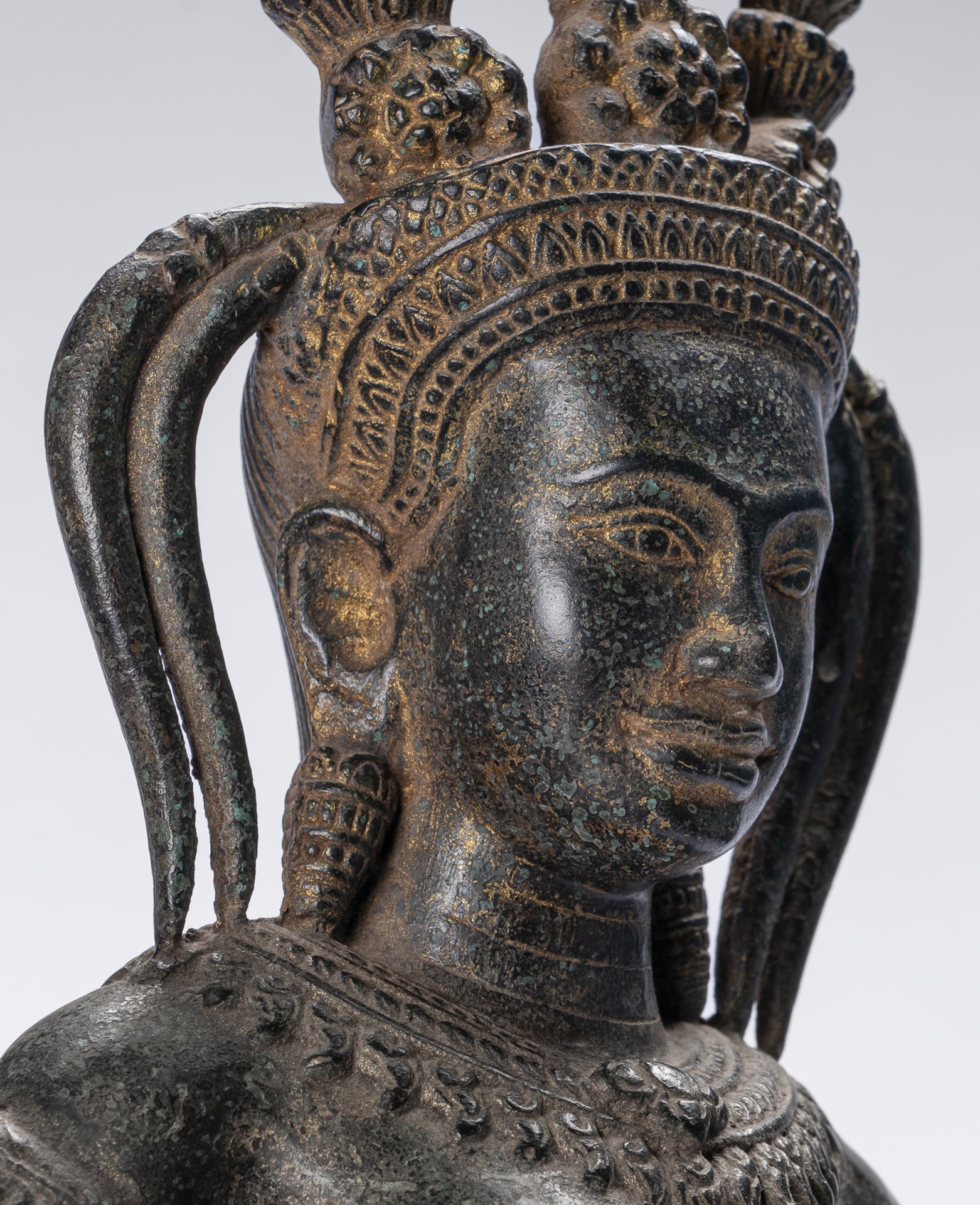
Apsara Dancers: Living Echoes of Cambodia’s Divine Past
When visiting Siem Reap, the gateway to the ancient temples of Angkor, one cannot help but be captivated by the graceful movements of Apsara dancers. These performers—adorned in ornate costumes and gilded headdresses—bring to life a tradition that stretches back over a millennium.
But who were the original Apsaras, and how do the dances seen in Siem Reap today relate to their ancient heritage?
This post explores the historical, artistic, and symbolic legacy of the Apsara dancers, from the bas-reliefs of Angkor Wat to the modern stage.
The Apsaras in Hindu-Buddhist Mythology
The word "Apsara" originates from Sanskrit and means “one who moves in the waters” or “celestial nymph.” In Hindu and Buddhist cosmology, Apsaras are divine female spirits, famed for their beauty, charm, and skill in dance. They reside in the heavenly realms and often appear in mythological stories performing celestial dances to entertain gods and heroes.
-
In Hindu epics, Apsaras like Menaka and Rambha are known for enchanting both gods and sages.
-
In Buddhist texts, they are similarly portrayed as graceful beings in heavenly paradises.
Their dance is not merely entertainment—it is an expression of cosmic harmony, courtly refinement, and divine seduction.
Apsaras in the Art of Angkor
The most enduring historical evidence of Apsaras comes not from scripture, but from stone.
Angkor Wat and Beyond
Over 1,500 Apsara figures are carved into the walls of Angkor Wat, each one unique in posture, attire, and expression. These carvings, dating back to the early 12th century during the reign of King Suryavarman II, represent the pinnacle of Khmer classical art. Unlike the celestial dancers of mythology, these Apsaras were intended to express real courtly ideals—elegance, refinement, and spiritual beauty.
-
They wear elaborate crowns, heavy jewelry, and the traditional sampot (a long, pleated skirt).
-
Their hand gestures (mudras) and flowing movements are carefully choreographed into the stone.
-
The carvings often appear in procession or as solo figures, capturing various moments of ritual dance.
These Apsaras weren’t merely decoration; they reflected the sacred role of dance in Khmer court culture, where temple dancers performed rituals that bridged the human and divine realms.
The Royal Dance Tradition of the Khmer Empire
The Apsaras depicted in Angkorian temples were not fictional. They had real-life counterparts in the form of royal court dancers, who served religious and ceremonial purposes.
-
Inscribed records and Chinese chronicles speak of thousands of dancers attached to the royal temples, particularly under King Jayavarman VII in the 12th–13th centuries.
-
These dancers were trained in precise choreographies, often tied to temple rituals, seasonal festivals, or royal celebrations.
-
Their movements were believed to invoke blessings, ensure cosmic order, and honor the deities.
This tradition continued well into the post-Angkorian period, evolving through centuries of political change, colonization, and cultural fusion.
Revival and Resilience in the 20th Century
Cambodia’s classical dance tradition suffered immensely during the Khmer Rouge regime (1975–1979), which decimated the artistic and intellectual classes. Many master dancers were lost, and traditional performances were nearly extinguished.
However, thanks to the efforts of surviving masters, the Royal Ballet of Cambodia, and government-supported initiatives, the Apsara dance was painstakingly revived in the late 20th century.
-
In 2003, UNESCO declared the Royal Ballet of Cambodia (which includes Apsara dance) a Masterpiece of the Oral and Intangible Heritage of Humanity.
-
Dancers today learn from oral transmission, memorizing gestures, postures, and spiritual meanings passed down through generations.
Apsara Dance in Siem Reap Today
Modern Apsara dance performances in Siem Reap—whether staged in cultural theaters, luxury hotels, or community venues—are more than tourist entertainment. They are cultural reenactments and spiritual homages to Cambodia’s sacred past.
A typical performance includes:
-
A slow, graceful sequence of hand gestures (kbach), each with symbolic meaning (flowers blooming, birds flying, waves rippling).
-
A narrative structure often drawn from mythological stories like the Churning of the Ocean of Milk.
-
Musicians playing the Pinpeat orchestra, composed of gongs, drums, xylophones, and flutes.
Dancers undergo rigorous training to master the extreme flexibility and control required, with a focus on facial serenity and hand articulation, just as the stone Apsaras portray.
Symbolism and Cultural Legacy
To watch an Apsara dancer today is to witness an unbroken cultural lineage. Each movement is a meditation on beauty, discipline, and divine communion. The Apsara dance represents:
-
Continuity: From temple rituals of Angkor to modern stages.
-
Resilience: Surviving war and repression through dedication.
-
Identity: A symbol of Khmer pride and spiritual expression.
Apsaras are more than dancers—they are the living embodiment of Cambodia’s sacred feminine, flowing from ancient mythology into contemporary celebration.
Final Thoughts
If you find yourself in Siem Reap, do not miss the chance to see an Apsara dance. Whether framed by candlelight in an open-air theater or accompanied by the shadows of Angkor’s ruins, each performance is a moment suspended in time—a dance begun in stone, continued in flesh, and alive in spirit.
Through the Apsaras, Cambodia dances with its past, and invites the world to witness the grace of a civilization that once brought heaven to earth.


